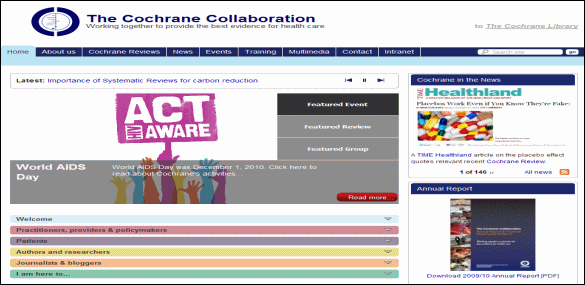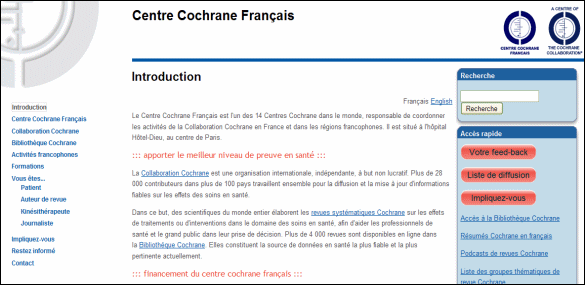LU POUR VOUS DE JANVIER 2011 : livres du mois - sites du mois - working papers
Tous les lu pour vous
LES LIVRES DU MOIS
L'hôpital sous pression : enquête sur le "nouveau management public".
Belorgey N.
Paris : Editions de la Découverte : 2010 : 330 p.
Depuis des décennies, les pouvoirs publics français s'efforcent de « réformer » l'hôpital, afin notamment d'en mieux « maîtriser » les dépenses. Ils ont de plus en plus recours aux outils du « nouveau management public », cet ensemble d'idées et de pratiques visant à importer dans le secteur public les outils du secteur privé : indicateurs de « performance », benchmarking, « responsabilisation » des professionnels, etc. Ces innovations rencontrent l'opposition d'une partie du personnel hospitalier, selon qui elles creuseraient la tombe du système de protection sociale. À l'inverse, leurs promoteurs dénoncent des résistances qui ne pourraient provenir que d'une forme d'attachement à un passé révolu ou de corporatisme ; ces modernisations permettraient au contraire de sauver un système bien mal en point. En quoi consistent donc réellement ces réformes managériales et quels sont leurs effets sociaux ? Pendant quatre ans, pour répondre à cette question, l'auteur de ce livre a mené une enquête approfondie dans des services de soin, en particulier des services d'urgence, ainsi que dans une agence réformatrice proche du ministère de la Santé et dans des cabinets de conseil. Il a ainsi endossé différents rôles : stagiaire dans les services administratifs des hôpitaux, étudiant de passage dans les services de soin, étudiant en gestion ou consultant junior auprès des réformateurs... Au travers d'observations directes, de l'exploitation inédite de données statistiques et d'une centaine d'entretiens, il livre ici une vision originale des processus à l'œuvre dans les hôpitaux. Il montre notamment que l'appropriation par les soignants des nouvelles normes préconisées par les réformateurs dépend beaucoup de la trajectoire professionnelle et sociale de chacun d'eux. Et il révèle quelques effets inattendus des réformes, dans un des services hospitaliers parmi les plus « avancés » sur leur voie (4e de couverture.)
Frontières et santé : genèses et maillages des réseaux transfrontaliers.
Moulle F., Duhamel S.
Paris : L'Harmattan : 2010 : 286 p.
Depuis une quinzaine d'années, la perméabilité des frontières a évolué sous l'impulsion des dynamiques liées à la mondialisation et aux processus macrorégionaux comme le renforcement de l'intégration européenne. Des réseaux transfrontaliers et transnationaux de soins se mettent en place, parfois structurés par des politiques de santé transfrontalières innovantes. Les lieux de consommation de soins sont bousculés par l'ouverture des frontières. Cet ouvrage aborde de manière originale les mutations spatiales liées à l'ouverture des frontières.
A la santé de l'oncle Sam : regards croisés sur les sytèmes de santé américain et français.
Tabuteau D., Rodwin V.
Paris : Odile Jacob : 2010 : 160 p.
2010 restera dans l'évolution des systèmes de protection sociale l'année de la réforme Obama, Dix ans après l'entrée en vigueur en France, de la loi créant la Couverture maladie universelle (CMU), les Etats-Unis ont fait aboutir, dans un climat de controverses et de polémiques, le projet phare de leur nouveau président. L'idée de ce livre a été, à ce moment clé de l'histoire sociale américaine, de s'interroger sur l'évolution des systèmes de santé américain et français. On croit volontiers que le système de santé français est collectif et public, tandis que le système de santé américain serait fondamentalement individualiste et privatisé. Ils seraient aux antipodes, en quelque sorte ! Pourtant cette comparaison inédite ne manquera pas de surprendre en proposant des résultats déroutants, parfois dérangeants. Au travers d'un véritable débat, deux spécialistes, français et américain, scrutent de près les réformes dans les deux pays, décryptent les pouvoirs de la médecine et analysent les paradoxes des deux systèmes de santé et leurs mutations sourdes (4e de couverture).
Quelle santé voulons-nous ?
Benchetrit K., Raymond G., Winckler M. / préf
Paris : les carnets de l'info : 2010 : 168 p.
A partir d'une expérience ciblée, celle de l'AFD (Association Française des Diabétiques), ce livre dénonce les insuffisances de notre système de santé dans la prise en charge et et le suivi des malades souffrant de maladies chroniques. Il met en garde notamment sur le désengagement progressif de l'Assurance maladie au profit des mutuelles et des assurances privées. Il prône une réflexion démocratique sur la politique de santé, prenant en compte la parole des usagers.
Où va le système de santé français ?
Grimaldi A., Le Pen C.
Bordeaux : Editions Prométhée : 2010 : 124 p.
Le trou de la Sécu n'en finit pas de se creuser, et avec lui la tombe d'un système de santé réputé dans le monde entier. Le système français souffre d'un mal rampant et récurrent, privatisation pour les uns, étatisation pour les autres. Développement des franchises médicales, instauration d'un médecin-traitant, déremboursement de soins, couverture maladie universelle, tarification à l'activité... les réformes se sont multipliées ces dernières années, qui viennent accréditer l'idée d'une impuissance des pouvoirs publics. Une chose est sûre : le régime de protection sociale hérité des lendemains de la Seconde Guerre mondiale a déjà vacillé sur ses bases. Pour les uns, une forte régulation étatique aurait remplacé un dispositif qui faisait la part belle à la cogestion et à la médecine libérale. Le service public se mettrait à l'heure d'une saine gestion. Les autres n'ont de cesse de dénoncer la logique sous-jacente à toutes les réformes de ces dernières années, qui tendrait à faire de la santé une marchandise et mettrait en péril l'égalité des soins.
L'enjeu des retraites.
Friot B.
Paris : La Dispute : 2010 : 171 p.
Les réformateurs et la plupart des opposants à la réforme actuelle des retraites, malgré leurs divergences, fondent leur diagnostic du prétendu " problème des retraites " sur les mêmes présupposés nous subirions un choc démographique, il serait impossible d'augmenter les cotisations qui alimentent les retraites, c'est un prélèvement sur la valeur produite par les actifs qui financerait les pensions, la justice voudrait que le montant des pensions soit déterminé par la somme des cotisations versées du temps de son activité. etc. Cet ouvrage répond à ces arguments et propose une tout autre analyse. Et si le problème démographique était une illusion ? Et si les pensions de retraite n'étaient pas un revenu différé mais un salaire continué. lié à la qualification ? Et si les retraités n'étaient pas des inactifs, comme le veut la statistique, mais des personnes différemment actives, enfin libres de travailler à l'écart du marché du travail ? L'enjeu des retraites c'est d'abord reconnaître et prolonger l'indéniable réussite humaine et politique des retraites. C'est également mettre en débat le statut du salaire et de la qualification pour tous, ainsi que le rapport au travail que nous voulons promouvoir. C'est seulement en posant de telles questions fondamentales que l'on pourra renouer avec les objectifs progressistes qui ont mené au système actuel et ouvrir une alternative sérieuse à la réforme en cours (4e de couverture).
LES SITES DU MOIS DE JANVIER
Cochrane collaboration
www.cochrane.org/
Presentation
La Collaboration Cochrane est une organisation internationale, indépendante, à but non lucratif. Plus de 28 000 contributeurs dans plus de 100 pays travaillent ensemble pour la diffusion et la mise à jour d'informations fiables sur les effets des soins en santé.
La Bibliothèque Cochrane comporte six bases de données accessibles en ligne.
- La Cochrane Database of Systematic Review (CDSR) : revues systématiques d'études évaluant les effets des interventions en santé (en prévention, diagnostic, thérapeutique et rééducation) et les axes d'amélioration de la méthodologie des études. Pubmed donne accès aux versions courtes des Cochrane Database Systematic Reviews (champ Journal ou TA, taper Cochrane database Sys Rev [ta]).
- Le Cochrane Central Register of Controlled Trials (CENTRAL) : ce registre central Cochrane des essais contrôlés recense des centaines de milliers d'essais cliniques contrôlés, identifiés par les membres du groupe selon leurs spécialités publiés dans d'autres bases de données (notamment les principales MEDLINE et EMBASE), dans des conférences et d'autres sources non répertoriées dans les bases de données bibliographiques. - La Cochrane Methodology Register (Methodology Register) : le registre méthodologique Cochrane contient une bibliographie d'articles traitant de la méthodologie d'élaboration des revues systématiques de la littérature.
- NHS Economic Evaluation Database : Références d'évaluations économiques (publiées) des interventions cliniques qui peuvent inclure des résumés structurés, critiques et très élaborés. C'est une source très importante pour les décideurs dans le domaine de la santé car elle leur apporte une aide à la décision.
- Health Technology Assessment Database : la base d'évaluation des technologies de la santé contient l'information sur l'évaluation de la technologie reliée aux interventions cliniques (prévention, réhabilitation, vaccins, appareils médicaux, procédures médicales et chirurgicales…). L'objectif de cette base est de favoriser la qualité des soins et une meilleure gestion des coûts de la santé.
- Database of Abstracts of Reviews of Effects (DARE): La base des résumés des revues des effets contient les abstracts des revues systématiques dont la qualité a été évaluée mais qui ne sont pas encore été analysées par la Cochrane.
Ce site propose également une webliographie qui présente un portrait des ressources les plus importantes en matière de soins de santé et de médecine fondés sur les données probantes. (http://www.cochrane.org/about-us/evidence-based-health-care/webliography). Les recommandations pour les livres, les articles et les ressources en ligne sont consultables par spécialité (par exemple épidémiologie, statistiques, évaluation de la littérature, directives et plus). Les autres ressources, telles que les bases de données et les revues, sont présentées par ordre alphabétique.
Centre Cochrane français
fr.cochrane.org/fr/
Presentation
Le Centre Cochrane Français est l'un des 14 Centres Cochrane dans le monde, responsable de coordonner les activités de la Collaboration Cochrane en France et dans les régions francophones. Une de ses missions est de développer et de coordonner la formation des auteurs et des utilisateurs des revues Cochrane en France et dans les régions francophones Son site propose un accès direct à la bibliothèque Cochrane, en décrit le contenu et les conditions d'accès.
Le site du Centre Cochrane Français propose également :
- Une lettre mensuelle des revues Cochrane à la une qui met en avant deux revues récentes ayant un impact sur la pratique des soins,
- Les résumés en français de certaines revues Cochrane,
- Une liste des revues Cochrane de grand impact : elle regroupe plus de 400 revues Cochrane concluant à l'inefficacité, le risque supérieur au bénéfice ou la restriction de l'utilisation d'une intervention au champ de la recherche. Cette liste comporte les titres et les conclusions des revues (en anglais)
- Des résumés sous format audio podcasts des revues Cochrane (en anglais)
- La liste des 50 revues les plus consultées des 30 derniers jours (en anglais)
- Documents de formation à l'interrogation des bases.
L'inscription à une liste de diffusion est également possible.
VU DE L'ETRANGER : QUELQUES WORKING PAPERS ANALYSES
Hôpital
Does Hospital Competition Save Lives? Evidence from the English NHS Patient Choice Reforms. 

La concurrence entre hôpitaux sauve-elle des vies ? Evidences issues des réformes sur le choix du patient dans le NHS anglais.
Cooper Z., Gibbons S., Jones S., Mc Guire A.
Londres : Spatial Economics Research Centre : 2010 : 51 p.
This paper examines whether or not hospital competition in a market with fixed reimbursement prices can prompt improvements in clinical quality. In January 2006, the British Government introduced a major extension of their market-based reforms to the English National Health Service. From January 2006 onwards, every patient in England could choose their hospital for secondary care and hospitals had to compete with each other to attract patients to secure their revenue. One of the central aims of this policy was to create financial incentives for providers to improve their clinical performance. This paper assesses whether this aim has been achieved and competition led to improvements in quality. For our estimation, we exploit the fact that choice-based reforms will create sharper financial incentives for hospitals in markets where choice is geographically feasible and that prior to 2006, in the absence of patient choice, hospitals had no direct financial incentive to improve performance in order to attract more patients. We use a modified difference-in-difference estimator to analyze whether quality improved more quickly in more competitive markets after the government introduced its new wave of market-based reforms. Using AMI mortality as a quality indicator, we find that mortality fell more quickly (i.e. quality improved) for patients living in more competitive markets after the introduction of hospital competition in January 2006. Our results suggest that hospital competition in markets with fixed prices can lead to improvements in clinical quality.
Cross border care EU : How to choose the best hospital ? A study of hospital information portals in five EU countries. 

Les soins transfrontaliers dans l'Union européenne : comment choisir le meilleur hôpital. Une étude des portails d'information des hôpitaux dans cinq pays de l'Union européenne.
Health Consumer Powerhouse. Bruxelles. BEL
Bruxelles : Health Consumer Powerhouse : 2010/11 : 88 p.
This report presents the results from the study “How to choose the best hospital?” During this investigative work, the Health Consumer Powerhouse team conducted a research on hospital information portals in five European countries: the Netherlands, Denmark, Germany, the United Kingdom and Sweden. These IT portals were analysed on aspects such as user-friendliness and quality of care information (QCI). Furthermore, a questionnaire about the use and effectiveness of such hospital information portals from the patients' point of view was distributed in 32 European countries and evaluated afterwards. The survey indicates huge patient interest in issues of information and choice in healthcare. The main conclusions that we draw together in this report reflect today's picture of QCI in all major European countries.
Demand for hospital care and private health insurance in a mixed public private system: empirical evidence using a simultaneous equation modeling approach. 

Demande de soins hospitaliers et assurance maladie privée dans un système mixte public/privé : évidence empirique via un modèle à équation simultanée.
Chai Cheng T., Vahid F.
York : HEDG : 2010/10 : 25 p.
This paper examines the determinants of hospital stay intensity, the decision to seek hospital care as a public or private patient and the decision to purchase private hospital insurance. We describe a theoretical model to motivate the simultaneous nature of these decisions. For the empirical analysis, we develop a simultaneous equation econometric model that accommodates the count data nature of length of stay and the binary nature of the patient type and insurance decisions. The model also accounts for the endogeneity of the patient type and insurance binary variables. The results suggest that there is some weak evidence of endogeneity between the decision to purchase insurance and the intensity of hospital use. We do not find significant moral hazard effects of private hospital insurance on the intensity of private hospital care. The results also indicate that the length of hospital stay for private patients is shorter than for public patients.
Choosing a high-quality hospital. The role of nudges, scorecard design and information. 

Choisir un hôpital de haute qualité. Le rôle des incitation, du score de performance et de l'information.
Boyce T., Nixon A., Fasolo B.
Londres : King's Fund Institute : 2010 : 76 p.
Patient choice, particularly the choice of hospital, has been at the heart of health policy for a number of years. The aim of this policy is to create competition, which in turn drives improvements in quality; for this to work effectively, patients have to make their choices on the basis of clinical quality. Significant resources have been devoted to offering patients more information to help them make their choices. But do people use the information that is available? This report explores how information can help patients to make informed choices. It is based on a research study, which began with a series of focus group discussions, the results of which informed the design of an online experiment. People were presented with information using a number of different ‘scorecards' comparing the performance of hospital, and different ‘nudges' were used to influence their choices. The research aimed to answer the following questions: What information do patients use when choosing a hospital? What is important to patients when choosing a hospital? How does the design of information influence the choices that patients make, and in particular, how can they be guided – using ‘nudges' – to make better decisions? Do people make better choices as they become more practised in making decisions (ie, do they learn to make better choices)?
Migrants
Examining the Gender, Ethnicity, and Age Dimensions of the Healthy Immigrant Effect: Implications for Health Care Policy. 

Examen du genre, l'ethnie et des dimensions de l'âge sur la santé des migrants : implications pour la politique de santé.
Kobayashi K.M., Prus S.G
Hamilton : SEDAP : 2010/10 : 13 p.
Using data from the 2005 Canadian Community Health Survey, the current study expands on previous research on the healthy immigrant effect (HIE) in adult populations by considering the effects of both immigrant and visible minority status on health for males and females in mid- (45- 64) and later life (65+). The findings indicate that the HIE applies to recent immigrant men in midlife; that is, new male immigrants – those who immigrated less than 10 years ago – have better health compared to their Canadian-born counterparts, and that the effect is particularly strong for visible minorities. The picture is similar for older women who have recently immigrated, however this advantage largely disappears when a number of socio-demographic, socio-economic, and lifestyle factors are controlled. For older men and middle-aged women of color, however, the reality is strikingly different: both groups report health disadvantages compared to their Canadian-born counterparts, with both recent and longer-term midlife women having poorer health. Findings are discussed in terms of their implications for health care policy for immigrant adults.
Politiques de santé
Youth-friendly health policies and services in the European Region. Sharing experiences. 

Politiques de santé et services destinés à la jeunesse dans la région Europe de l'OMS. Partage d'expériences.
Baltag V., Mathieson A.
Copenhague : OMS -Bureau Régional de l'Europe : 2010 : 267 p.
This publication presents experiences of how health systems in Member States of the WHO European Region respond to the challenge of meeting the health and developmental needs of young people. The main aim is to facilitate experience-sharing and stimulate actions in countries. The first part presents a summary of the proceedings of the Meeting on Youth-friendly Health Policies and Services held in Edinburgh, United Kingdom (Scotland), 21–23 September 2009, with suggestions to inform decision-makers' actions on creating and developing youth-friendly health policies and services in their own countries and internationally. Then follows a series of 12 case studies from nine countries with differing socioeconomic contexts that recently put in place youth health services initiatives. The case studies are presented within a health system framework which recognizes that for service delivery to achieve its aims, sustainable financing, adequate human resource development strategies and responsible leadership are necessary.
Healthy Lives, Healthy People: Our strategy for public health in England. 

Vivre en bonne santé : notre stratégie en matière de santé public en Angleterre.
Department of Health. (D.H.). London. GBR
Londres : Department of Health : 2010 : 96 p.
This White Paper outlines a radical shift in the way we tackle public health challenges. We have to be bold because so many of the lifestyle-driven health problems we see today are already at alarming levels. Britain is now the most obese nation in Europe. We have among the worst rates of sexually transmitted infections recorded, a relatively large population of problem drug users and rising levels of harm from alcohol. Smoking alone claims over 80,000 lives every year. Experts estimate that tackling poor mental health could reduce our overall disease burden by nearly a quarter. Health inequalities between rich and poor have been getting progressively worse. We still live in a country where the wealthy can expect to live longer than the poor. The dilemma for government is this: it is simply not possible to promote healthier lifestyles through Whitehall diktat and nannying about the way people should live. Recent years have proved that one size-fits-all solutions are no good when public health challenges vary from one neighborhood to the next. But we cannot sit back while, in spite of all this, so many people are suffering such severe lifestyle-driven ill health and such acute health inequalities. We need a new approach that empowers individuals to make healthy choices and gives communities the tools to address their own, particular needs. The plans set out in this White Paper put local communities at the heart of public health. We will end central control and give local government the freedom, responsibility and funding to innovate and develop their own ways of improving public health in their area. There will be real financial incentives to reward their progress on improving health and reducing health inequalities, and greater transparency so people can see the results they achieve. We are simplifying the way we organise things nationally, too, with a dedicated new public health service – Public Health England – taking the place of the complex structures that exist today. The new dedicated service will support local innovation, help provide disease control and protection and spread information on the latest innovations from around the world.
The Impact of Demographic Change, Co-Morbidity and European Care Policies on the Choice of Care arrangement. 

L'impact du changement démographique, de la comorbidité et des politiques européennes de santé sur le choix des dispositions en matière de soins.
Meng A.
Bochum : Ruhr-Universität Bochum : 2010/11 : 32 p.
Recent literature on long-term care looks at the substitutability of informal and professional home-based care arrangements. Other factors that influence the utilization of informal care instead of formal care have been ignored in conditional analyses so far. However, regressors that represent demographic change and the development of co-morbidity are of crucial interest to forecast the future choice between different care services. Therefore, I use SHARE data from 2004 as they contain rich information on illnesses, health limitations, and health behavior. I estimate bivariate and multivariate probit models to identify the determinants of different care arrangements, namely informal care, professional home-based care, or a combination of both types, as well as living in a nursing home. Unobserved factors that affect all forms of care arrangements simultaneously can be accounted for. Moreover, I use data on European long-term care expenditure to examine the effects that public spending has on the choice of care arrangements. Simulations of different scenarios of demographic change illustrate that the developments in frailty are decisive for the future care market structure.
Willingness to Pay for Public Health Policies to Treat Illnesses. 

Propension à payer pour des politiques de santé publique centrées sur les traitements des maladies.
Bosworth R., Cameron T.A., De Shazo J.R.
Eugene : University of Oregon : 2010 : (95 p.)
As the U.S. contemplates health care reform that may involve more publicly provided health services, it is important to understand the likely patterns in public support for, and opposition to, public provision of treatments that increase recoveries and reduce deaths. We find that support (and willingness to pay for these policies) differs for health threats which are more or less prevalent and when larger or smaller populations are eligible to participate, for different types of beneficiaries, and across policies which represent more or less of a long-term commitment of public funds. Within a stated preference survey, individuals expressed their policy preferences over alternative public health programs, as well as their time preferences over alternative time-patterns for disbursement of potential lottery winnings. Our central modeling contribution is a utility-theoretic specification that permits us to estimate public health policy preferences jointly with individual-specific time preferences. We quantify a variety of dimensions of significant heterogeneity but draw particular attention to the prevalence of (a.) an unwillingness to pay for these policies via income tax increases regardless of their benefits, and (b.) a very strong pattern of self-interest in determining support for different types of policies.
Protection sociale
World Social Security Report 2010/11. Providing coverage in times of crisis and beyond. 

Rapport sur la sécurité sociale dans le monde 2010-2011: assurer une couverture sociale en temps de crise et au-delà.
Organisation Internationale du Travail. (O.I.T.). Genève. INT, International Labor Organization. (I.L.O.). Genève. CHE
Genève : Organisation Internationale du Travail : 2010 : 278 p.
Sound social security policies have to be based on facts and figures. This report provides that factual basis to support the development of national social security policies. It is the fi rst in a series of World Social Security Reports which will also help to monitor the global progress on social security coverage and thus support the ILO's campaign to extend coverage. It deals first with the scope, extent, levels and quality of coverage by various social security branches; it then examines the scale of countries' investments in social security, measured by the size and structure of social security expenditure and the sources of its financing; and finally presents the nature of social security responses to the crisis as a thematic focus. The main objective of the current report is to present the knowledge available on coverage by social security in dif erent parts of the world, and to identify existing coverage gaps.
Soins de longue durée
The Private Cost of Long-Term Care in Canada: Where You Live Matters. 

Les coûts privés des soins de longue durée au Canada : où vous vivez a de l'importance.
Fernandes N., Spencer B.G.
Hamilton : McMaster University : 2010 : 307-316 p.
Canadians expect the same access to health care whether they are rich or poor, and wherever they live, often without direct charge at the point of service. However, we fi nd that the private cost of long-term care differs greatly across the country, and within provinces, we find substantial variation, depending on income level, marital status, and, in Quebec alone, on assets owned. A non-married person with average income would pay more than twice as much in the Atlantic provinces as in Quebec, while a couple with one in care would pay almost four times as much in Newfoundland as in Alberta.
Soins de santé primaires
Standards and Guidelines for Physician Practice Connections - Patient-Centered Medical Home (PPC-PCMH). 

Normes et recommandations pour la pratique médicale en réseau - les maisons de santé centrées sur le patient.
National Committee for Quality Assurance. (N.C.Q.A.). Washington DC. USA
Washington DC : National Committee for Quality Assurance : 2008 : 68 p.
NCQA's Physician Practice Connections- Patient-Centered Medical Home (PPC-PCMH) program assesses whether physician practices are functioning as medical homes. Building on the joint principles developed by the primary care specialty societies, the PPC-PCMH standards emphasize the use of systematic, patient-centered, coordinated care management processes. The Patient Centered Medical Home is a health care setting that facilitates partnerships between individual patients, and their personal physicians, and when appropriate, the patient's family. Care is facilitated by registries, information technology, health information exchange and other means to assure that patients get the indicated care when and where they need and want it in a culturally and linguistically appropriate manner. There are nine PPC standards, including 10 must pass elements, which can result in one of three levels of recognition.
Strengthening primary and chronic care : state innovations to transform and link small pratices. 

Renforcer les soins primaires et la prise en charge des maladies chroniques : innovations des Etats fédéraux pour transformer et lier les pratiques locales.
Takach M., Gauthier A., Sims-Kastelein K., Kaye N.
New York : The Commonwealth Fund : 2010 : 55 p.
Federal and state governments play a significant role in strengthening the delivery of primary care; current efforts, however, have disproportionally been focused on large or multispecialty practices. This report examines the roles states are playing to reorganize the delivery of primary and chronic care to produce more efficient and effective care for patients and providers, particularly in small practices. Through short case studies developed via interviews with state officials and physicians in Colorado, Michigan, North Carolina, Oklahoma, Pennsylvania, and Vermont, the authors highlight several state-based initiatives that seek to create high-performing health systems by targeting local and regional strengths. Additionally, the authors identify five themes critical to enacting strategic delivery system reforms: leadership and the convening of stakeholders, payment incentives, support for infrastructure, information feedback and monitoring, and certification and recognition.
The quality of care in general practice. Capturing opinions from the front line. 

La qualité des soins en pratique générale.
Goodwin N., Ross S., Smith A.
Londres : King's Fund Institute : 2010/10 : 11 p.
The Inquiry into the Quality of General Practice in England, commissioned by The King's Fund, has been collecting and examining evidence on the quality of care and services provided by GPs and other health professionals working in general practice. The work has focused on key aspects (‘dimensions') of general practice, selected by the inquiry panel as representing core areas for quality improvement. But what do GPs and other primary care professionals think about the quality of care being provided? To answer this question, the Fund conducted an informal, online survey, completed by 843 GPs and other practice-based professionals. They were asked what they thought about the care being provided by their own practice and in primary care more generally and which of the different methods of quality improvement were most likely to improve quality. This paper offers a snapshot of health professionals' views and raises key issues for further debate. Overall, GPs felt that the quality of the care provided in general practice was high. Almost 60 per cent of respondents believed that providing continuity of care should be the main priority for improving the quality of general practice in England, with management of long-term conditions also identified. Perhaps surprisingly, given the government's focus on this issue, access was not thought to be a priority. In considering the impact of different methods of quality improvement, the primary care practitioners thought that best practice guidelines and pay-for-performance schemes had the most potential.
Patient choice : How patients choose and how providers respond ? 

Choix des patients : Comment les patients choisissent-ils les producteurs de soins et comment ces derniers répondent-ils à leur choix ?
Dixon A., Robertson R., Appleby J. et al.
Londres : King's Fund Institute : 2010 : 215 p.
The policy of offering patients a choice in where they receive hospital treatment was intended to create competition between providers, encouraging efficiency and responsiveness to patients' preferences and ultimately to drive up the quality of care. So has the policy met those aims? Since January 2006, patients requiring a referral to a specialist have been entitled to a choice of four or five providers. And from April 2008 that choice has been extended to any eligible NHS or independent sector provider in England – so-called ‘free choice'. Patient choice: how patients choose and how providers respond considers how choice of provider is operating in practice and its impact on hospital providers. More specifically, the report aims to answer the following questions. The study was conducted in four areas in England and included questionnaires sent to patients and interviews with patients, GPs and Providers. The results showed that choice was important to the majority of patients but just under half recalled being offered a choice. There were differences in patient, and GP and provider views on who thought choice was important, who was offered a choice and who chose to travel beyond their local hospital for treatment. Data from choices made in hypothetical and real situations showed that patients valued aspects of quality when choosing a hospital. However in practice, most patients chose to be treated by their local provider and few consulted published performance information on quality to help them choose, instead relying on past experience and their GP's advice. While the threat of patients choosing a different hospital led some providers to focus more on reputation, there was little evidence of direct competition for patients' custom and choice has not so far acted as a lever to improve quality.The information about how patient choice is working in practice will be invaluable to those seeking to implement the policy at national and local level.
Systèmes de santé
Health systems' responsiveness and its characteristics: a cross-country comparative analysis 

La réactivité du système de santé et ses caractéristiques : une analyse comparative internationale.
Robone S., Rice N., Smith P.C.
York : HEDG : 2010/11 : 33 p.
This paper investigates the influence of aggregate country-level characteristics on health system responsiveness, using data on 62 countries present in the World Health Survey. While evidence exists on variations in reported levels of health system responsiveness across countries, the literature is sparse on the determinants of responsiveness, particularly of system wide characteristics (World Health Report, 2000). We attempt to bridge this gap in the literature by considering simultaneously several plausible country-level characteristics as potential determinants of health system responsiveness. These characteristics refer to the way health care systems are organised and funded, the socio-demographic traits of the populations served and the economic, cultural and institutional characteristics of countries. We pay particular attention to the role of health care expenditures per capita while controlling for potential confounding factors. Data on responsiveness and socio-demographic characteristics of respondents are taken from the World Health Survey, a survey launched by the World Health Organization in 2001. Information on the country-level characteristics are obtained from the United Nations Development Program (UNDP), the World Value Survey and the Polity IV Project database. The empirical analysis is performed by adopting a two step procedure. First, we increase the crosscountry comparability of the data by adjusting for variation in the way survey respondents rate an objective level of responsiveness using the hierarchical ordered probit (hopit) model. Secondly, we investigate the influence of health spending per capita and other country characteristics on the adjusted country-level measures of responsiveness. Our results suggest that the most relevant determinants of responsiveness appear to be health expenditure per capita, health care expenditure in the public sector and population levels of education.
Health care delivery : Features of Integrated Systems Support Patient Care Strategies and Access to Care, but Systems Face Challenges. 

L'offre de soins : caractéristiques des stratégies des systèmes intégrés de soutien aux soins de patients et accès aux soins.
United States General Accounting Office. (G.A.O.). Washington WA. USA
Washington : GAO : 2010 : 28 p.
The Health Care Safety Net Act of 2008 directed GAO to report on integrated health system models that integrate primary, specialty, and acute care and serve uninsured and medically underserved populations. This report provide more in-depth information on organizational features that IDSs use to support strategies to improve patient care; approaches IDSs use to facilitate access to care for underserved populations; and challenges IDSs encounter in providing care, including care provided to underserved populations.







